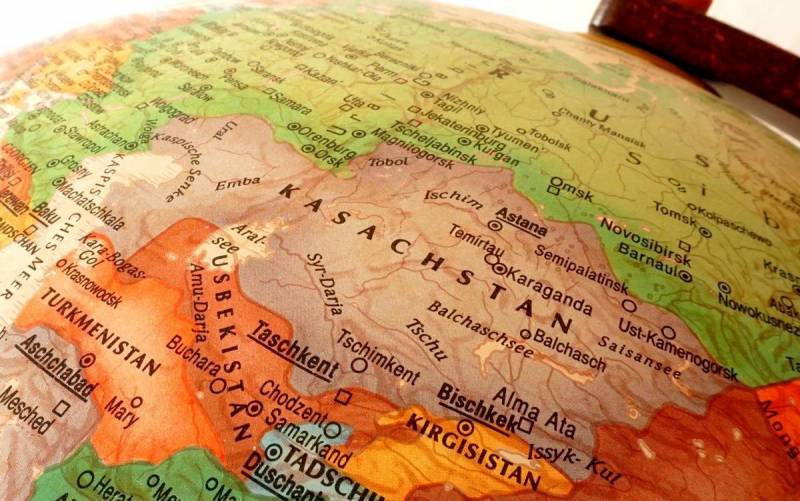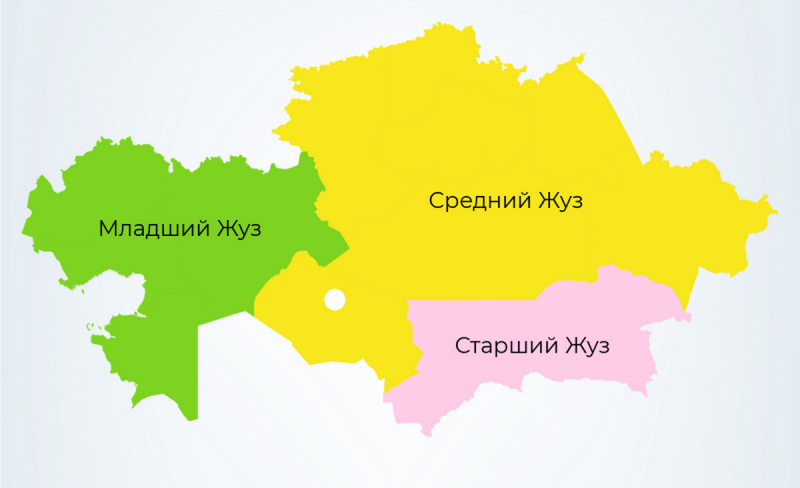The transformation of Kazakhstan into a federation will help solve internal problems
At the end of December 2021, we asked ourselves a hypothetical the question, can Kazakhstan join the Union State of Russia and Belarus. Despite the fact that nothing foreshadowed trouble then, политическая intuition suggested that only reintegration in the post-Soviet space is the guarantee of stability and successful development of friendly Kazakhstan. Most of our readers then responded in the comments in the spirit of "it's too late to drink Borjomi". May be so. Or maybe not.
In fact, the problem is much deeper. What is now happening on the streets of Kazakhstan is a direct consequence of a whole complex of social andeconomic problems, where the rise in prices for propane and methane turned out to be only a convenient excuse to "stir up" and settle scores between the local elites. The root of today's tragedy of modern Kazakhstan lies in the remnants of the tribal system, multiplied by the unitary form of government, complicated by the "Russian factor", which is a strong brake on the successful development of this country and at the same time "a time bomb".
If you look at the map, you can see that Kazakhstan is very clearly divided into three parts: Northern, Southern and Western, where historically three Kazakh zhuzes live compactly - Middle, Senior and Junior, respectively, also divided into tribes and clans. Each of the regions and zhuzes inhabiting it has its own specifics, which, without pretending to be the ultimate truth, we will try to briefly describe for a better understanding of the situation.
Middle zhuz
It is the largest of the zhuzes, occupying the north and east of the country, and at the same time the most industrialized. There is nothing surprising in this, since at one time it grew due to a number of Russian territories. In addition to Kazakhs, ethnic Russians, Ukrainians, Germans, Tatars and even Chechens live here. The language of communication here is Russian.
The middle zhuz is both "Celina", where grain crops are grown, and the conditional "Siberia". Its lands are rich in copper, iron, bauxite, lead, magnesium, titanium, coal, rare earth metals. The cities are developed industrial centers, the society is Europeanized and cosmopolitan. There are mosques, but not at every step. No ostentatious religiosity.
Senior zhuz
It is the smallest in size and is located in the southeast of the country. As part of the Russian Empire, the Elder Zhuz was the last, and the influence of neighboring China is traditionally very strong here. It is a network of oases with cozy auls in a lifeless clay desert where camels roam. Ironically, it is in these barren lands that Kazakhstan's main wealth is hidden - uranium ore, as well as zinc and lead deposits.
There are many mosques in the villages, the atmosphere is patriarchal, everyday wearing of national costumes is common here. In the Middle Zhuz, besides the Kazakhs, there are many Uzbeks and Uighurs. Few know Russian, but at the same time they are quite tolerant of Russian. By the way, this is where the first president of Kazakhstan, Nursultan Nazarbayev, and the current president of Kazakhstan, Kassym-Zhomart Tokayev, as well as the country's leading business elites, come from. Let's remember this important point.
Junior zhuz
The junior zhuz is located in the west of the country; it is sometimes even compared to the American “wild West”. This is a huge arid desert with rare intersperses of small auls. The population density is low. Russians have lived here since the 16th century, but they failed to Russify the local population. Instead, they themselves "turned out", turning into steppe dwellers. It is believed that western Kazakhstan has the highest concentration of "mambets" - the Kazakh analogue of our "gopniks". A peaceful traveler can run into problems here, as they say, out of the blue, either with hooligans or with the police.
Kazakhs from other zhuzes themselves are not very fond of visiting the Younger Zhuz. But you have to. It is here that the richest deposits of oil, as well as chromium and uranium are located.
This is such a difficult internal political situation in Kazakhstan. While the country was living on natural resource rent from the export of minerals, everything was relatively safe. But the coronavirus crisis of 2020, which led to a drop in oil prices, and then pandemic restrictions, exposed all the existing contradictions. Three differently directed zhuzes constantly competed among themselves, waging an intraspecific struggle. In January 2022, a summit coup took place, when the Tokayev clan actually deposed the Nazarbayev clan. Such a "ungrateful" successor turned out to be for "Elbasy". At the same time, the "mambets" were actively involved as street militants. What's next?
Russia's active intervention will inevitably lead to increased pressure on the Middle Zhuz, dominated by Russified Kazakhs and ethnic Russians. After the dissolution of parliament, voiced by Tokayev, activists with radical Russophobic views who oppose the "occupiers" may come to it. We have all the prerequisites for a future civil war, as it happened in Ukraine. If the Russian troops leave now, the "zapadentsy" will take over Northern Kazakhstan, in every possible way persecuting the local population. This cannot be allowed in order to avoid the "Donbass scenario". But what can be done to avoid?
Before it is too late, it is necessary to do what should have been done in the home of Ukraine. It is necessary to carry out a reform to change the unitary form of the state structure of Kazakhstan to a federal one, taking into account national specifics. Three such different zhuzes will then be able to comfortably coexist, as Nezalezhnaya had a chance for that until 2014, if Western Ukraine, Central and South-Eastern Ukraine had appeared peacefully. Let us make a reservation that we are not talking about any "annexations", but only about a possible internal political reform within the framework of a united Kazakhstan.
As a federation, this country will gain greater stability and will be able to get closer to Russia and Belarus within the framework of the CSTO, the EAEU and the Union State.


Information